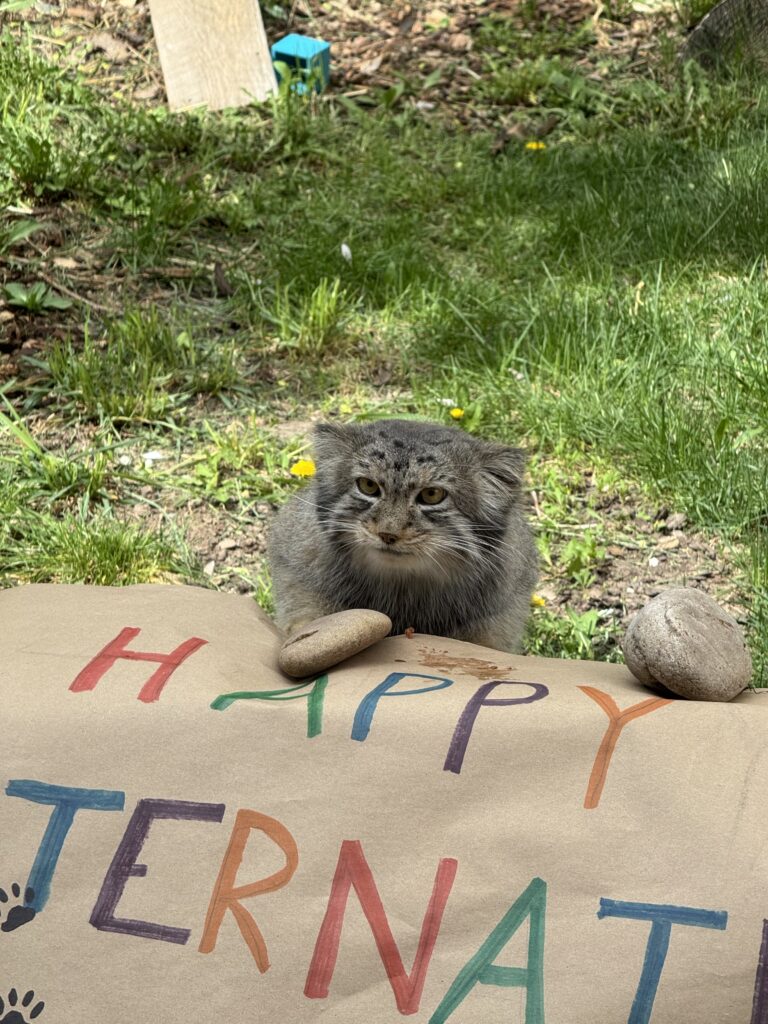

Welcome Phil
Utah’s Hogle Zoo welcomes 5-year-old
Pallas’ cat, Phil, to Asian Highlands!
Phyllaris—better known as Phil— comes to Hogle Zoo from Birmingham Zoo in Alabama where he will continue to serve as an ambassador for his species.
Phil, who has the signature stubbornness of Pallas’ cats, is settling into his new habitat in Asian Highlands and warming up to his care team. Guests may spot Phil in his outdoor space, though he also has access to his indoor area as he gets comfortable.
Family ties
Phil’s arrival marks a return to his roots. He’s the grandson of Hogle Zoo’s former breeding pair, Petenka and Hal, who welcomed a litter of five Pallas’ cats in 2018. One of their offspring, Bataar, moved to Birmingham Zoo, where he later fathered Phil. That makes Phil not only a familiar face by lineage—but also a second cousin to Kaarina, the zoo’s current female Pallas’ cat.
Three makes a "grump"
With the addition of Phil, Hogle Zoo is now home to three Pallas’ cats. This officially qualifies them as a “grump,” the affectionately coined term by the Association of Zoos and Aquariums Pallas’ cat Species Survival Plan (SSP) to describe a group of these classically grumpy cats.

While Phil will now be the Pallas’ cat guests can spot in Asian Highlands, he’s not the only one calling the zoo home. Kaarina, who arrived earlier this year on a Pallas’ cat SSP breeding recommendation, is currently living behind the scenes with a third Pallas’ cat—Khir. He is a seven-year-old male Pallas’ cat from Lee Richardson Zoo in Kansas. Khir and Kaarina will remain behind the scenes as part of their breeding recommendation, while Phil settles into his new habitat in Asian Highlands.
Pallas' cat conservation
Pallas’ cats live in central and western Asia’s montane grasslands and rocky steppes. Despite being classified as lower risk on the International Union for Conservation of Nature (IUCN) Red List, they face significant threats. Pallas’ cat populations are small, fragmented, and declining due to habitat loss from livestock encroachment, agriculture, infrastructure development, and mining. Other threats include prey loss, poisoning, and climate change. Pallas’ cats depend on prey like pikas and small rodents and shelters like marmot burrows, making them particularly vulnerable to environmental changes and human activity.
You can visit Phil in Asian Highlands. Look for him perched on rocks and curled up in cozy spots throughout his habitat!
Fun facts about Pallas' cats
- Pallas’ cats are built for life in the highlands. Their small, round ears are set low on their heads, helping them stay hidden among the grasses as they prowl. These small ears, combined with their dense coats and bushy tails, minimize heat loss and keep them warm, even in the frigid temperatures of the Asian Highlands.
- Pallas’ cats live where large predators like tigers and leopards are and have evolved big attitudes to help them survive. They’re often called the signature “grumpy cat” for their iconic look.
